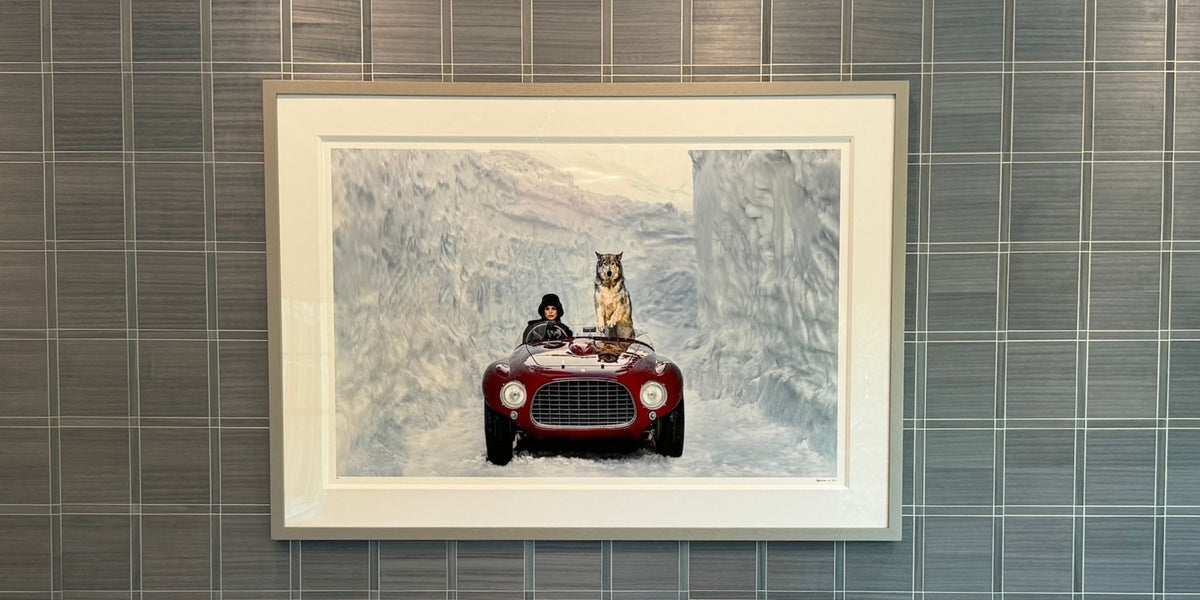
The Art of Art Arrangement - Part 2
|
Time to read 3 min
|
Time to read 3 min
Transforming your home into a personal art gallery that tells your unique story is rewarding in both an immediate and long-term way. Yet, as we mentioned in Part One, arranging it can feel intimidating—a delicate dance of aesthetics, emotion, and design. We know it's more than just hanging frames. It's about creating an environment that sings to you and for you, a visual symphony. But mastering The Art of Art Arrangement is something anyone can do ... a seasoned collector, an enthusiast, or a novice. Part One covered five essential tips to give you confidence in composing that visual symphony: comprehensive composition, scale and proportion, lighting and illumination, and framing.
In Part Two, we'll explore five additional tips to take your arrangement skills to the next level: sight lines and flow, the entrance tone, flexibility, breaking the rules, and the value of a trusted art advisor. Ultimately, the joy lies in the process. So, embrace the journey, experiment, and have fun as you transform your home into a personalized gallery that reflects your unique style and sensibilities.
Art arrangement is about creating a visual journey through your space. What story do you want to tell when someone enters a room? Establish a focal point—a key piece that anchors the space—and support it with smaller, complementary pieces that guide the viewer's gaze.
Think about how people move through a room and from room to room. Arrange pieces to create natural visual pathways, ensuring each has breathing room. This will contribute to an overall sense of balance. The goal is a harmonious arrangement that feels both intentional and effortless.
Your home's entrance is its first impression, a preview of the visual narrative within. Choose works that immediately communicate the spirit of your home. Consider selecting imagery or sculpture that connects with the local landscape, reflecting the region's color palette and cultural essence.
A thoughtfully arranged entryway can set the emotional tone for your entire home. It might be a local landscape, an abstract piece that captures the area's energy, or a personal work that speaks to your individual journey. This initial impresssion invites guests into your personal world, offering a glimpse of the creativity that lies beyond.
Art is alive, and so should be its arrangement. Don't consider your first placement as permanent. Be prepared to experiment, move pieces around, and allow your collection to evolve. It might take several attempts to find the perfect combination, and that's part of the joy. There is no need to rush this part of the process. Create a grouping and live with it for a few days. See how it feels and what it says to you or for you.
Your collection should be a living, breathing entity that grows and changes with you. As your interests expand and your life shifts, so should the arrangement of your art. What works today might feel different tomorrow, and that's perfectly okay.
Perhaps the most important principle of art arrangement is that there are no definitive rules. It is deeply personal, a reflection of individual taste, emotion, and experience. While design principles can guide you, ultimately, the most important criterion is simple: Do you love it?
Choose pieces that speak to you, that bring you joy, that make you pause and feel something. Be playful, take risks, mix styles, and trust your instincts. Your collection is a visual soundtrack of your life, a testament to your journey, your passions, and your unique perspective.
Sometimes, the most artistic decision is knowing when to seek expert help. Art advisors don't just help you locate and acquire new pieces—they're visual storytellers who bring a trained eye to your personal collection. They navigate the complex interplay of placement, considering how colors converse, textures interact, and pieces create emotional connections. A skilled advisor helps you curate a space that's visually compelling, and deeply personal.
As a collaborative partner in your artistic journey, they may challenge your perspective gently, suggest unexpected combinations, and help you see your collection in a new light. Professional guidance becomes invaluable when you want to elevate your space. Rather than imposing a vision, a trusted advisor works to refine your unique aesthetic, transforming your art collection into a living narrative that reflects your individual style and voice.
Take joy in building your collection. Savor the time you spend acquiring new pieces. Don't rush it. Keep the initial excitement alive with thoughtful arrangements and groupings. Think about your collection as a whole as it grows, and how each piece strengthens the overall tone. Refer to these ten tips as you master the art of art arrangements.